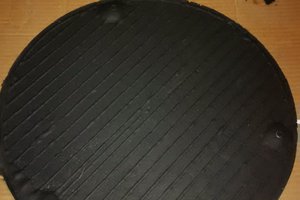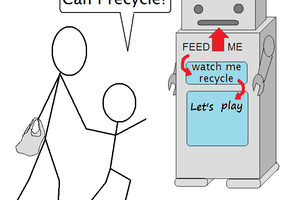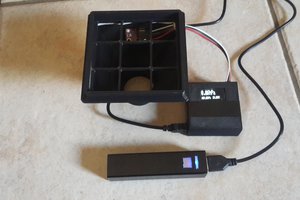Ok, first of all an important mention goes out to Edderic Ugaddan (twitter @eddericu ) who is currently making and selling a cool device called the Laminair. It's his research that showed me that this kind of device was valuable, because he has shown that you can get good protection factors from directing HEPA filtered air at your face. If you want to "just buy" something, there's that. I haven't tried one but I know he's a good guy.
There are "personal air cleaners", which supposedly use ionization to get particles to stick together and fall from the air. They don't work for jack.
NOTE: I think the H11 filter is probably a better idea, the H13 one gives kind of low flow even after adding the plastic rings to the fan. The H11 is usable even without adding the rings.
There are other "personal HEPA" filters, however other than the Laminaire, I have not seen any for sale or diy-able that actually direct clean air toward your face, which seems like an inherently more efficient approach for stronger protection than trying to clean the whole room with a small device.
I think this is probably because the size and weight is too great to get a good result, for comfortable neck mounted wear, without the conical annular jet.
But now... there is the conical annular jet. It causes air to flow at the edges of the Clean Air Zone at a higher speed/volume than the center. The stuff in the center does not need to move fast, and making it move fast takes a lot of clean air.
By reducing the total CFM (cubic feet per minute, of airflow, a CFM is 28.3 liters per minute) required to give a given level of stability and reliability to the Clean Air Zone, it helps. Lower CFM means the whole thing becomes cheaper easier, quieter and smaller. Less of everything, and less is more ;-). A large filter is also the way to go, it means a less powerful and quieter fan, smaller cheaper battery, no need for high powered electronics.
I estimate it chops the size of the unit, for the same degree of protection, but about a factor of 3 or so, which is enough to make a real practical difference, and if it had to be bigger you'd be stuck for a fan because this is the biggest easy to get suitable fan.
I estimate flow on max to be about 25 CFM, however you won't need to use it on max much. I crank it up when I'm walking around in the grocery store because you can't hear it anyway with the background noise and when you are moving around max flow is perhaps warranted.
I would be the first to say I do not think these are "the solution", however I think it's a legit tool in the box, like if you are on the bus or in a hospital or eating or something. I figure you should get fairly good protection most of the time, and you can also use it in addition to a mask if you want to hedge against leaks, although a papr might be a better idea at that point, this is a little easier and less intimidating.
Regarding exactly how much protection you get in various situations like near field and far field, it's pretty hard to know. One day I'd like to tape a PM2.5 sensor to my nose and another to the intake of the device and walk around during my day to see what particulate level reduction I get. I've also got it on my list of things I'd like to do to drill a hole in the base of the filter, insert a nicotine-free e-cigarette, and it should spew fog. I could set up a camera and walk around and see how reliably my face stays in the clean air zone. Obviously this will confuse some people greatly because foggy air represents clean air. I try to avoid those people :P.
This or better yet a refined device could also work for allergies. Clearly if it's going to be employed it should be improved to shrink it etc.
Not everyone can wear masks for various reasons, it can cause problems with your eyes, for instance.
It is possible to further shrink this...
Read more »
 MasterOfNull
MasterOfNull
 shlonkin
shlonkin
